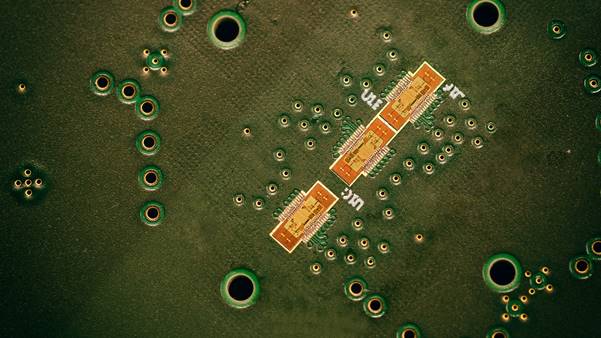By Gina Roos, editor-in-chief
Imec , a research and innovation hub in nanoelectronics and digital technologies, recently unveiled its small and highly sensitive 140-GHz multiple-input/multiple-output (MIMO) radar system. The researcher demonstrated the radar system with machine learning for gesture recognition, indicating capabilities for detecting small gestures and vital signs, at FutureSummits 2019.
Delivering high performance in resolution and motion sensitivity, the 140-GHz radar-on-chip prototype system offers ultra-fine resolution that allows the detection of micro-skin movements, such as in vital-sign applications for non-contact patient monitoring or driver monitoring. The radar operates up to a 10-m range, with a 15-mm range resolution and a bandwidth of 10 GHz.
Imec used multiple antenna paths to enable a complete (virtual) 1 × 4 MIMO configuration to achieve angular target separation. The transceiver with on-chip antennas are produced on 28-nm bulk CMOS technology for low-cost production.

With imec’s latest demonstration, the researcher shows the feasibility of using radar technology for detecting and classifying small motions based on Doppler data thanks to the new machine-learning capabilities.
Imec’s machine-learning algorithm is based on a multi-layer neural network, including an LSTM layer, and uses supervised learning to train the inference model by using in-house recordings of more than 25 people, including several captures for seven gestures. The model classifies the recorded seven gestures and predicts the right gesture at least 94% of the time using the experimental data set.
“This opens new opportunities — for example, enabling gesture recognition for intuitive man-machine interactions,” said Barend van Liempd, R&D manager at imec, in a release. “Think about the AR/VR space, where the new radar can support intuitive interaction with virtual objects. Gesture recognition can potentially also enable intuitive device control — complementary to existing interfaces such as voice control or smart touchscreens.”
In addition to gesture recognition, imec said that the technology can measure vital signs with very high precision thanks to the high radio frequency. This means that it could be used for in-car vital-sign monitoring systems to enable non-contact tracking of the driver’s state. It could detect if the driver is falling asleep, for example, or if the driver is experiencing abnormal stress levels or acute health issues such as heart or epilepsy attacks. It could also be used to monitor small children in the vehicle, even providing an alert if the child is left unintentionally in the car.
Radar solutions offer advantages over other types of motion sensors, said imec, offering operation in all lighting conditions and preserving privacy. In addition, the small size makes it easy to integrate into almost any devices, such as laptops, smartphones, and screen bezels.
Imec is working on a new generation of radar chips, incorporating the TX and RX as separate chips, for a new 4 × 4 MIMO radar system. This will provide greater flexibility in distributing the MIMO array elements across the available area, said imec. The researcher will also evaluate the feasibility of increasing the functionality of the standalone radar chips to enable MIMO systems with larger arrays of chips.
Imec’s 140-GHz radar was developed as part of an open innovation research and development (R&D) collaborative program. Companies can participate in the program or in a bilateral R&D project. They can also license the technology building blocks.
Advertisement
Learn more about Electronic Products Magazine





